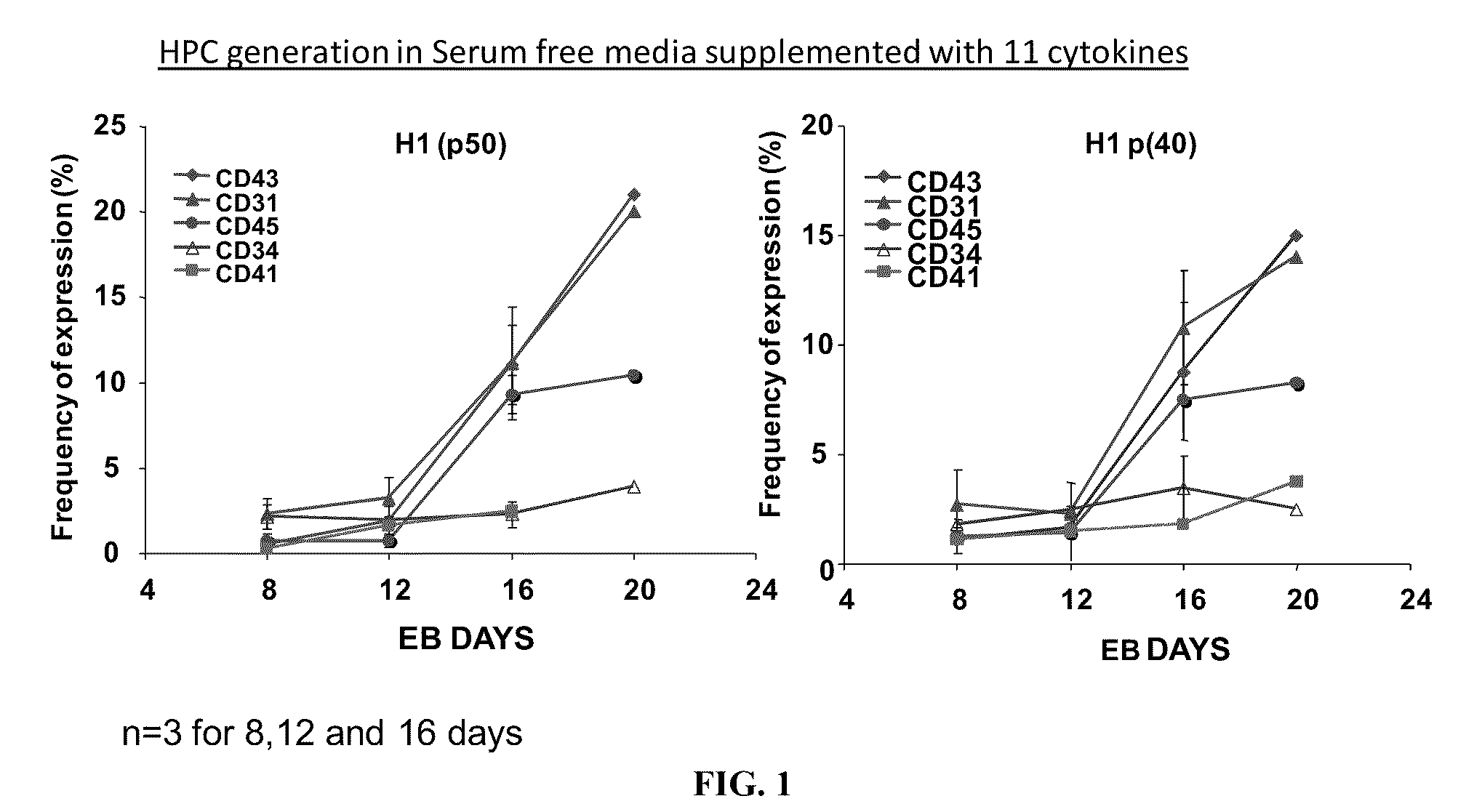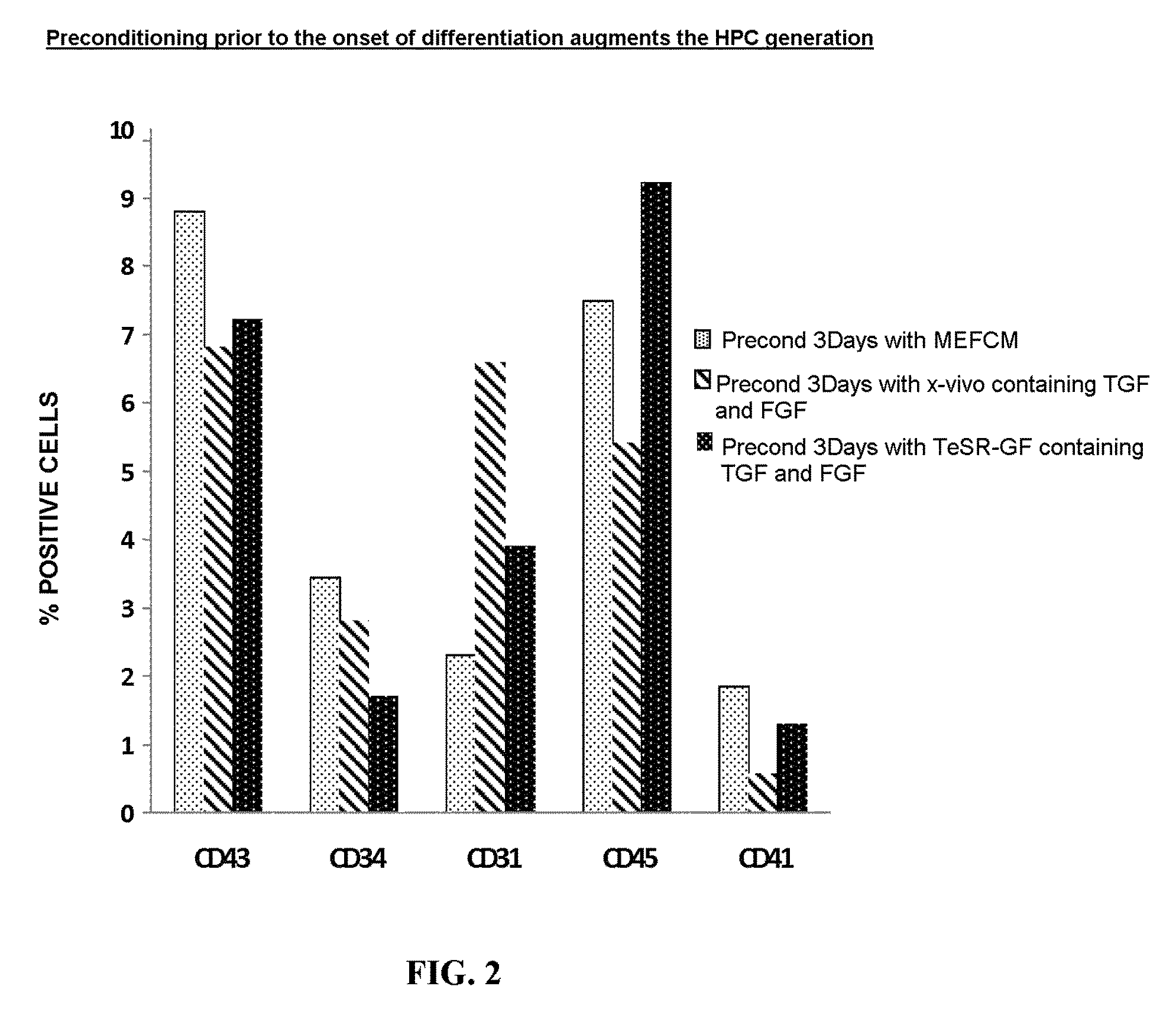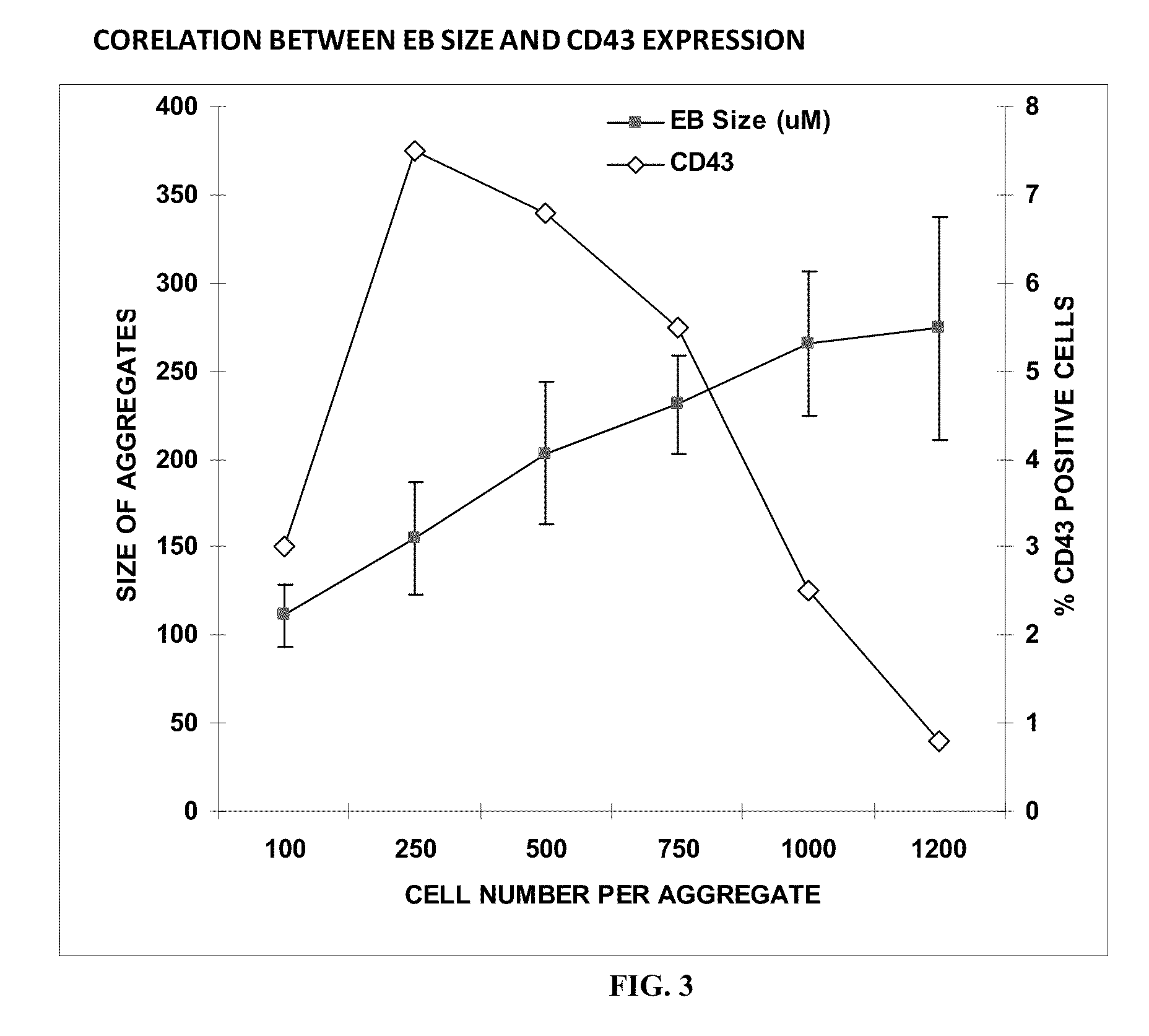Differentiation of pluripotent cells
a technology of pluripotent cells and differentiation medium, applied in the field of molecular biology and medicine, can solve the problems of presenting the risk of unexpected transformation, and affecting the differentiation efficiency of pluripotent cells, so as to increase the efficiency of pluripotent cell differentiation, promote differentiation, and promote the effect of hematopoietic precursor cells
- Summary
- Abstract
- Description
- Claims
- Application Information
AI Technical Summary
Benefits of technology
Problems solved by technology
Method used
Image
Examples
example 1
[0193]Making EBs: Undifferentiated hESC's and iPSC's that were adapted to feeder free growth on Matrigel™ coated plates were harvested at confluence using collagenase IV (1 mg / ml) treatment for 10 minutes at 37 C. The wells were washed free of collagenase after the incubation and the EBs were formed by scraping the wells in EB basal media. The media was changed the next day to EB differentiation media containing different cytokine formulations.
[0194]Undifferentiated hESC's and iPSC's that were adapted to feeder free growth on Matrigel™ coated plates were harvested at confluence using TrypLE™ treatment for 6 minutes at 37 C. TrypLE™ in the wells was neutralized using “EB basal media” containing 1 μM ROCK inhibitor, Soybean trypsin inhibitor (0.25 mg / ml). The cells were collected and washed in EB basal media containing 1 μM ROCK inhibitor, Soybean trypsin inhibitor (0.25 mg / ml). The cells were counted to check viability and plated in low attachment plates in EB basal media containing ...
example 2
[0199]The in vitro aggregation of human embryonic stem cells (hESCs) or iPSC induced into clusters termed embryoid bodies (EBs) allows for the differentiation of cells representing endoderm, mesoderm, and ectoderm lineages. This stochastic process for EB formation can be steered to generate hematopoietic precursor cell types by the addition of exogenous growth factors.
[0200]The inventor has established a novel feeder free and serum free defined EB based hematopoietic differentiation protocol with a set of five essential cytokines to generate hematopoietic precursor cells expressing CD43+, CD34+, CD31+ and CD45+ on the cell surface between days 9-13 days of differentiation. The efficiency of generating the precursor cell type was between 5-8% across two human hESCs and four iPSCs. EBs formed using 200-1000 cells per aggregate, hypoxia, and a reaggregation step during the differentiation process favors the generation of hematopoietic precursor cell types.
[0201]The method can efficient...
example 3
[0221]Hematopoietic precursors were produced from single cell suspensions of hESCs and iPSCs. Single cell suspensions, or individualized cells, were produced by trypsin digestion.
[0222]Methods Used for Making EBs from Single Cells
[0223]hESCs and iPSCs adapted to feeder free growth on matrigel maintained using mTESR were preconditioned for three days in the presence of mTesR-GF containing 0.1 ng / ml TGF-β and 20 ng / ml FGF-2. To initiate differentiation from single cells the, the cultures were treated with TrypLE™ Select (Invitrogen) for 6 minutes and the cells suspension was collected in (1) plain EB basal media, (2) EB basal media containing PVA, (3) EB basal media containing 0.5% PVA and 1 μM H1152 or 10 μM Y27632 ROCK inhibitor, or (4) EB basal media containing only 1 uM H1152 ROCK inhibitor. The cells were collected and washed once and plated in the respective media formulations on a low attachment plate at 37 C. The EB formation status was checked at 18-24 hrs later under a phase...
PUM
| Property | Measurement | Unit |
|---|---|---|
| concentration | aaaaa | aaaaa |
| concentration | aaaaa | aaaaa |
| concentration | aaaaa | aaaaa |
Abstract
Description
Claims
Application Information
 Login to View More
Login to View More - R&D
- Intellectual Property
- Life Sciences
- Materials
- Tech Scout
- Unparalleled Data Quality
- Higher Quality Content
- 60% Fewer Hallucinations
Browse by: Latest US Patents, China's latest patents, Technical Efficacy Thesaurus, Application Domain, Technology Topic, Popular Technical Reports.
© 2025 PatSnap. All rights reserved.Legal|Privacy policy|Modern Slavery Act Transparency Statement|Sitemap|About US| Contact US: help@patsnap.com



